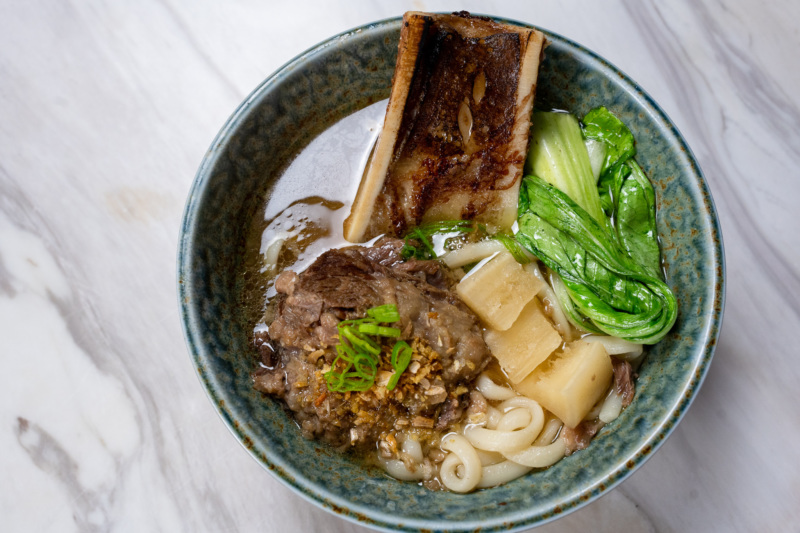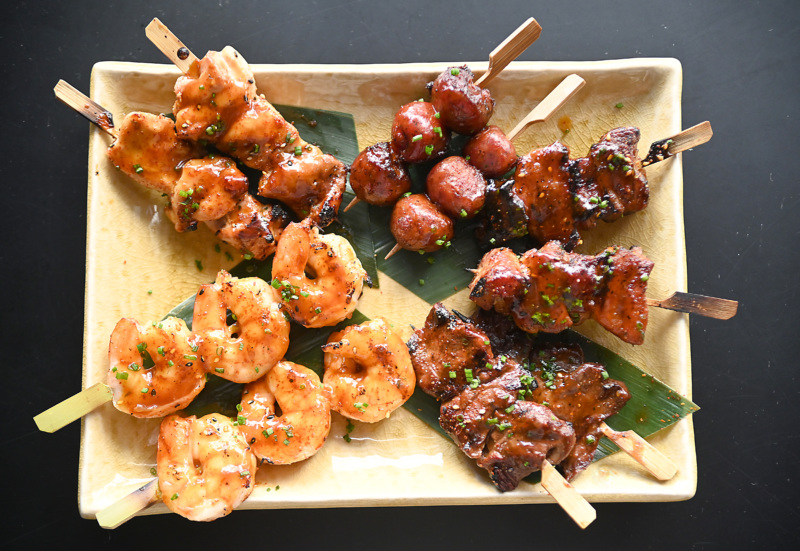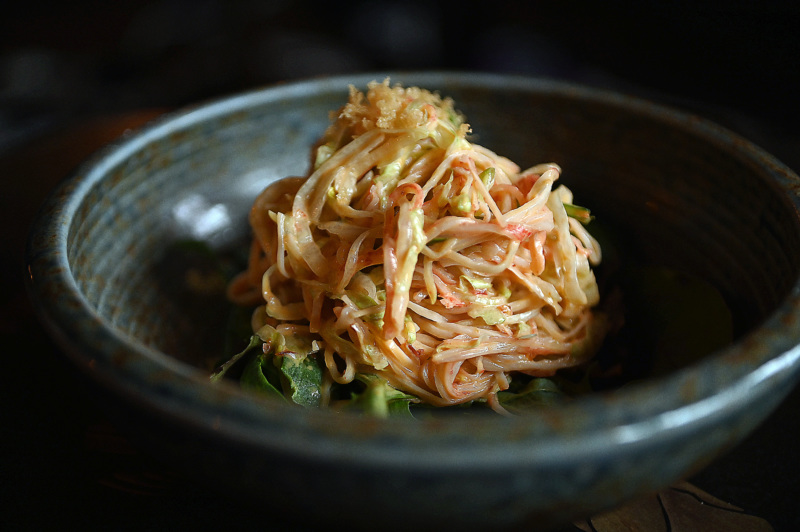
Everything You Need to Know About Gugu Room, Now Open on the Lower East Side
Gugu Room, a new Filipino Japanese izakaya on Orchard Street that opened in May, might not be here if it weren’t for actor Adrien Brody.
Apparently, The Pianist himself is friends with Jason Soong, one of Gugu Room’s business partners and its resident DJ. It was Brody who suggested the Filipino Japanese blended concept — one that didn’t yet really exist anywhere else in New York — to Soong.
“When we did our first opening day, he was the first one there,” chef Markee Manaloto, formerly of Kissaki, said. “He was a big influence.”
Whether Gugu Room is your only stop of the night or one of many on the Lower East Side, chances are you’ll want to hang around for a while. Here’s everything you need to know before you go.

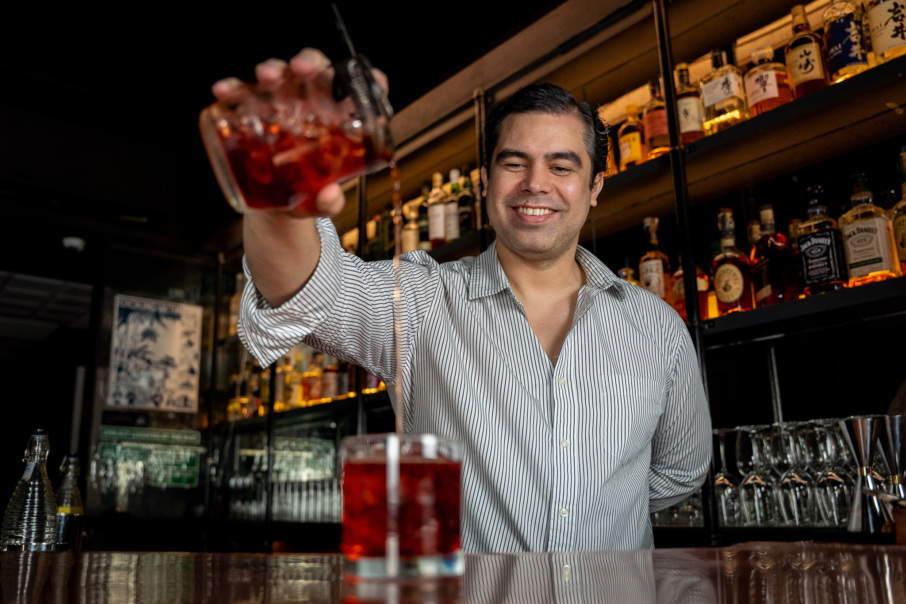
1. Gugu Room has a stacked pool of restaurant and bar talent behind it.
Behind Gugu Room is a dream team of Filipino American restaurant and bar veterans, including chef Aris Tuazon (formerly of Ugly Kitchen), international bar consultant Lee Watson, and chef Manaloto, who brings his expertise in traditional Japanese cuisine.
2. The cuisine is “New Filipino,” by way of classic and new Japanese.
The team at Gugu Room would rather not call their food “fusion,” a term often associated with outdated and culturally appropriative fare made by white chefs for white audiences. Rather, the food at Gugu Room is deeply rooted in both Filipino and Japanese culinary traditions, combining flavors and techniques from both in ways that just make sense.
For example, take Manaloto’s short rib udon. As a starting point, he used a popular Filipino dish bulalo, a soup made with beef shank and filled with aromatics and bright vegetables. Then, he added filling, carb-packed noodles, Japanese udon, and finished the dish with mirin, soy sauce, and sake to round out the flavor. Some bright daikon radish finishes it off.
The dinner menu features some Mexican influences as well, in the form of their tacos, which are made with gyoza skin that’s been deep fried and folded into a taco shape. Gugu Room also features a robata kushiyaki offering that includes spicy teriyaki chicken and grilled shrimp as well as meats common to Filipino street food, like grilled isaw (pork intestine) and liempo (pork belly), among others.
The brunch menu, served only on Sundays, combines traditional Filipino dishes with Japanese influence, like silog (garlic fried rice and egg) with Kurobuta pork, or unagi barbecue bowls with eel and masago over fried rice.
If you’re looking to celebrate with a group, consider Gugu Room’s customizable Kamayan feasts for parties of six or more. The customizable dinners, traditionally eaten with your hands, must be reserved two days in advance and feature dishes like lumpia, steamed blue crab, adobo wings, cod sisig, and longanisa (pork sausage and quail egg). It’s priced at $60 per person for your choice of seven courses.


3. Everything at Gugu Room is inspired by a 19th-century romance.
While developing the concept that would become Gugu Room, the team stumbled upon a piece of history that seemed to perfectly encapsulate what they were going for. José Rizal, a 19th-century writer and political activist from the Philippines, spent two months in Tokyo on his way to Manhattan in 1888. There, he met and had a brief whirlwind romance with a samurai’s daughter, named O-Sei San.
To the Gugu Room team, this relationship exemplified the excitement and beauty that can come from Japanese and Filipino cultures coming together. The lovers’ portraits are prominently featured on one wall of the bar, and you’ll find other homages to them around Gugu Room as well, like their love letters, framed and displayed prominently in the bathrooms.
The romance also inspired the restaurant’s name. Says co-owner Marco Viray, “Going gugu or going gaga over something — that’s why we chose the name, Gugu Room. We found that the word ‘gugu’ was a Japanese term of endearment and since the concept was about the story of José Rizal and O-Sei San, we felt the name was fit for the concept we had in mind.”
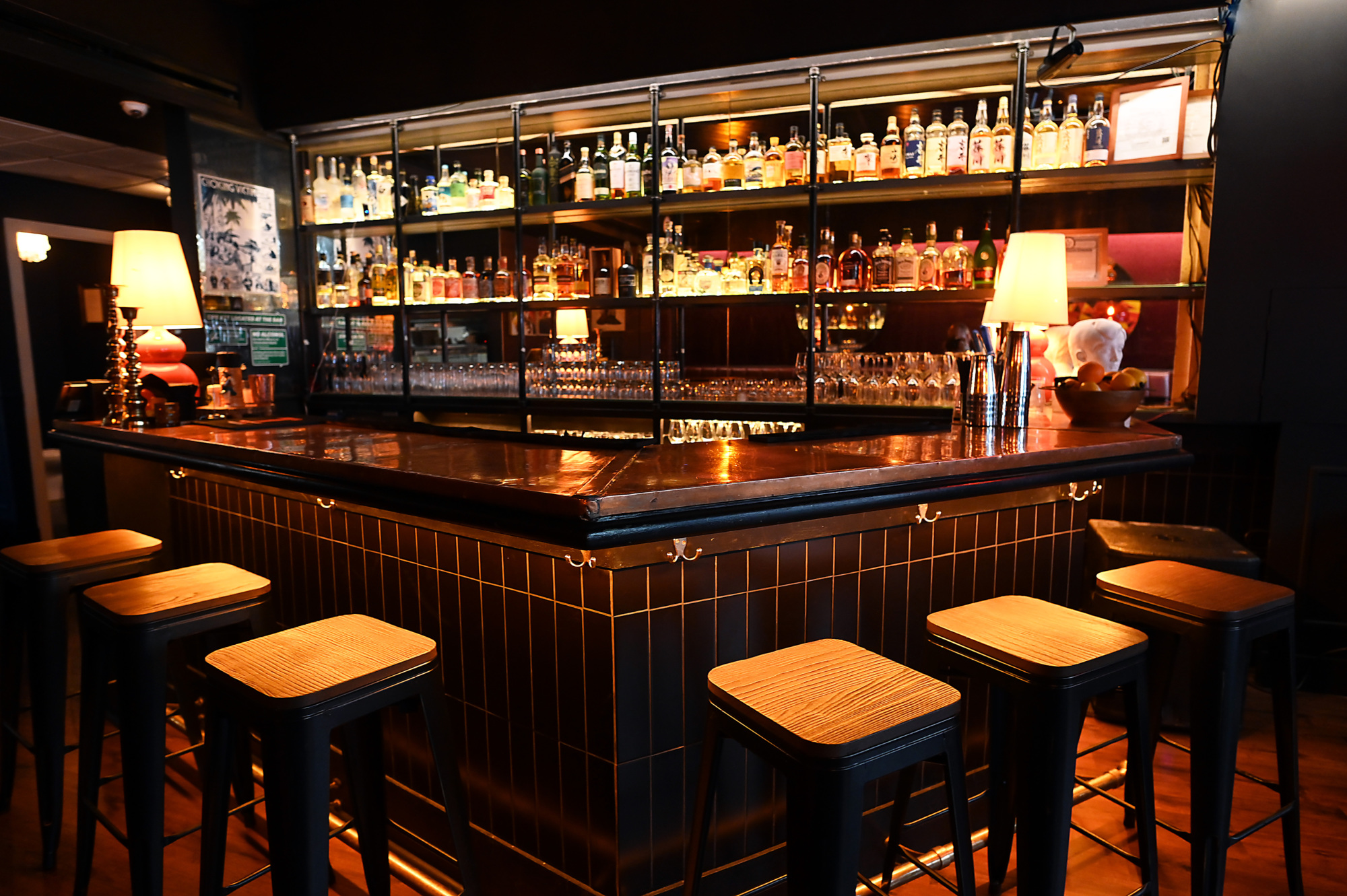

4. You can try spirits you won’t find anywhere else in the city.
If the Philippines had a national spirit, it would be rum. You’d be forgiven for not knowing that, though — or not knowing that the world’s biggest producer of rum by sales volume is Tanduay, a Filipino brand — because Filipino spirits haven’t historically been distributed in the U.S. anywhere near the scale of, say, Bacardi.
If you’re a rum nerd, or just a spirits enthusiast in general, Gugu Room’s spirits program, curated by Watson, ought to be on your radar. They currently have nine different Filipino rums and a Filipino gin, as well as four Japanese rums and nine Japanese gins, in addition to an expansive collection of Japanese whiskies, of course. You’d be hard-pressed to find another bar in New York that can offer a tour of the Philippines, and Japan, quite like this one.
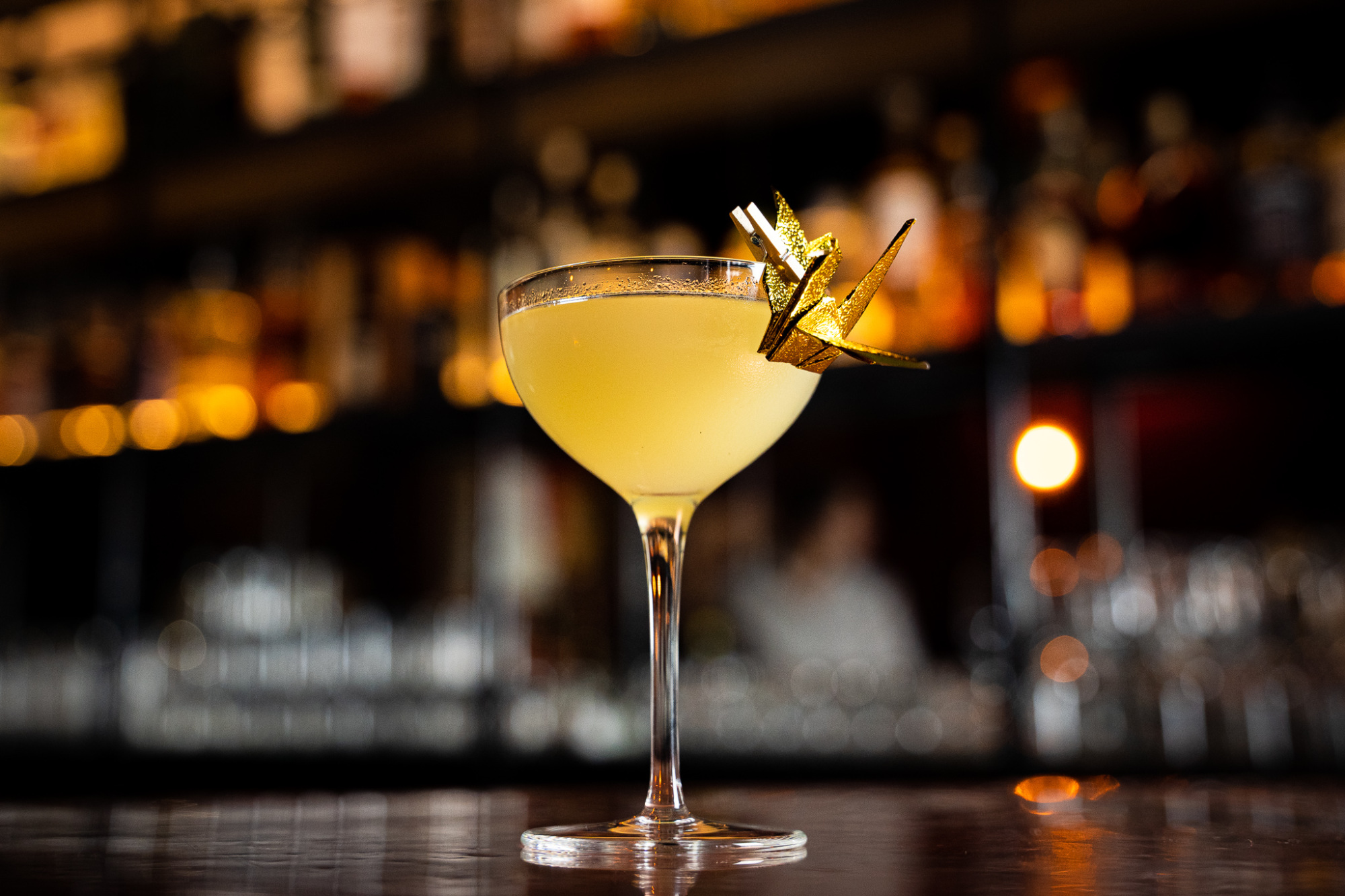
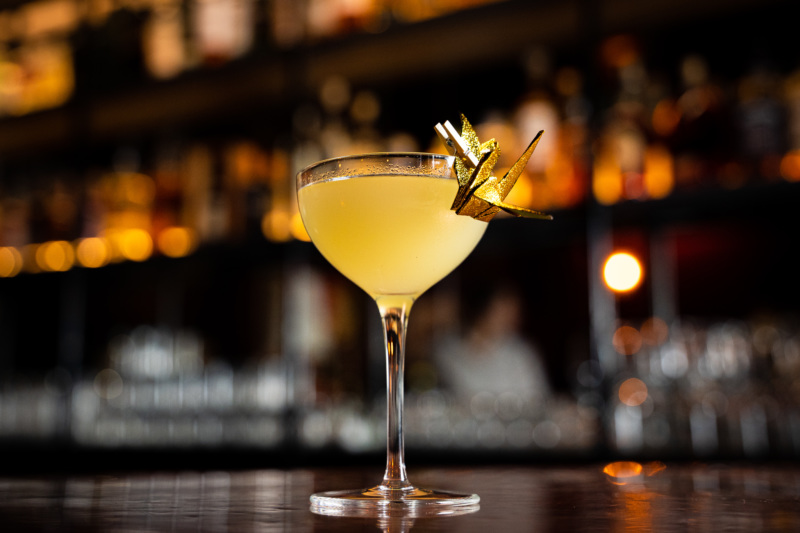
5. Drink with your eyes — and then, of course, your full fist.
The first thing you’ll notice about the drinks at Gugu Room is just how pretty they are. If you walk in on a Friday evening, you’ll see patrons sipping brightly colored and stylishly garnished drinks. The El Fili Daiquiri, for instance, is the color of orange juice and features red, black, and white speckles from its togarashi-kissed rim; the Yuzu Gimlet, with its golden origami crane garnish, is nothing if not photogenic.
But they’re not all looks. Watson’s cocktails are creative, unique spins on classic cocktails, cleverly featuring Filipino and Japanese ingredients. The Nori Me Tangere Negroni, for example, is made with a Japanese gin and garnished with nori. Watson’s mad science really shines, though, with the Wasabi Mar-Gari-Ta, featuring pickled ginger and wasabi, your typical sushi garnishes, balanced with traditional margarita ingredients and some calamansi honey. The pickled ginger complements the acidity of the lime, and the wasabi adds some heat like you’d find in a jalapeño or habanero margarita.
Expect to find totally original renditions of familiar drinks. To Watson, “a classic is a classic for a reason,” referring to the margaritas, negronis, highballs, and other classic cocktails his drinks are based on. “It works and it makes sense.
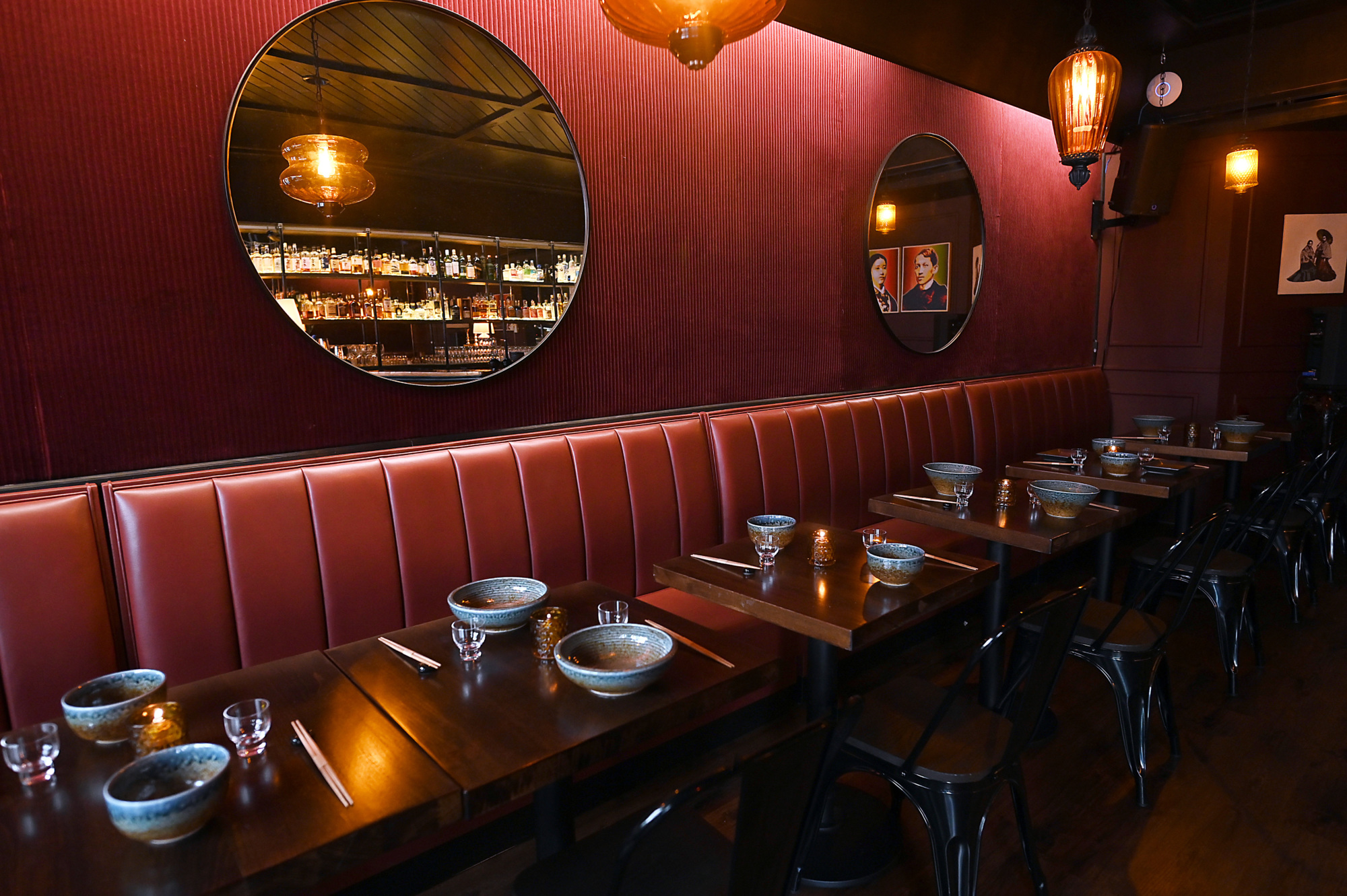
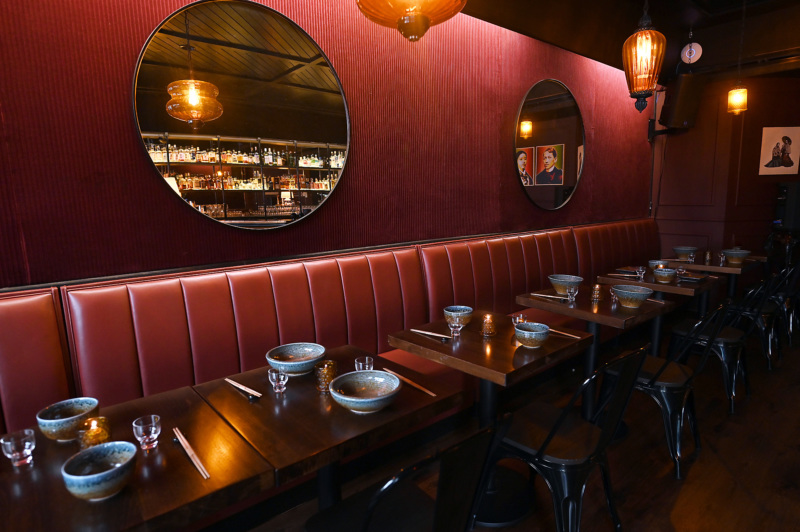
6. Come for dinner, or for dancing.
Since Gugu Room opened in May, Manaloto has noticed that most nights, the bar has two waves of guests: the dinner crowd, and the nightlife crowd. Which is to say, whatever mood you’re looking for, you can probably find it here.
The dark, loungey feel of the space is accented with hand-picked art by Filipino artists, and the outdoor dining area is decorated with hanging flowers and paper lanterns. Come in for dinner and enjoy a sit-down meal paired with a drink, or stop in a little later to get your night out started. As the night progresses, the staff will move the tables to allow more room for dancing while Soong or a guest DJ spins disco and 80’s and 90’s pop — you know, the kind of music that will actually get Lower East Siders up and moving. And if you work up an appetite from all that dancing, take a break for some yakitori robata or a bowl of truffle edamame before moving on to your next stop.
“We want this to be a very welcoming place,” Manaloto said. “We want people to have fun, to have a good dinner.” The team envisions the Gugu Room as a hub for community — the New York Filipino community, the neighborhood, and the city’s artists, food obsessed, and music lovers.
“It’s just a vibe over here,” Manaloto says with a shrug. “I don’t know how to explain it more.”
Gugu Room is open from 5 to 11 p.m. Tuesdays through Thursdays, from 5 p.m. to 1 a.m. on Fridays and Saturdays, and from 1 to 9 p.m. on Sundays.
Ariana DiValentino is a writer, filmmaker, and actor based in Brooklyn. Follow her on Instagram, Twitter, and TikTok. Follow Resy, too.
Discover More

Stephen Satterfield's Corner Table



